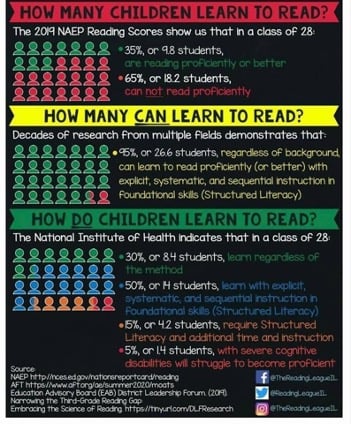The excitement and intrigue around the science of reading has many educators looking for clear and concise guidelines on just what to teach and how. Our new course 5227: Shifting Your Focus to the Science of Reading helps to sort through the research, providing a pathway toward more robust instructional practices. With 6 manageable, yet powerful shifts outlined in the course text, “Shifting the Balance,” by Jan Burkins and Kari Yates, you’ll strengthen your early reading instruction so more students can unlock the code that enables them to read with greater confidence and less struggle.
Watch the video below for background on the debate that has sparked discussion on the most effective ways to teach early reading:
The infographic below illustrates the varied reading needs in just one single classroom. How does your classroom compare?

Research shows that structured Literacy approaches are effective at helping students of varied abilities learn to read. So what is Structured Literacy? It’s not a program or an out-of-the-box curriculum, but instead, it is an explicit, systematic, and sequential instruction of foundational skills that focus on phonological awareness, word recognition, phonics and decoding, spelling, and syntax at the sentence and paragraph levels. This way of teaching reading is based on decades of research and is often called the “Science of Reading.”
With an easy to follow synthesis of the research, and strategy shifts that you can implement tomorrow, our new course 5227: Shifting Your Focus to the Science of Reading will help you move from confusion to clarity.







